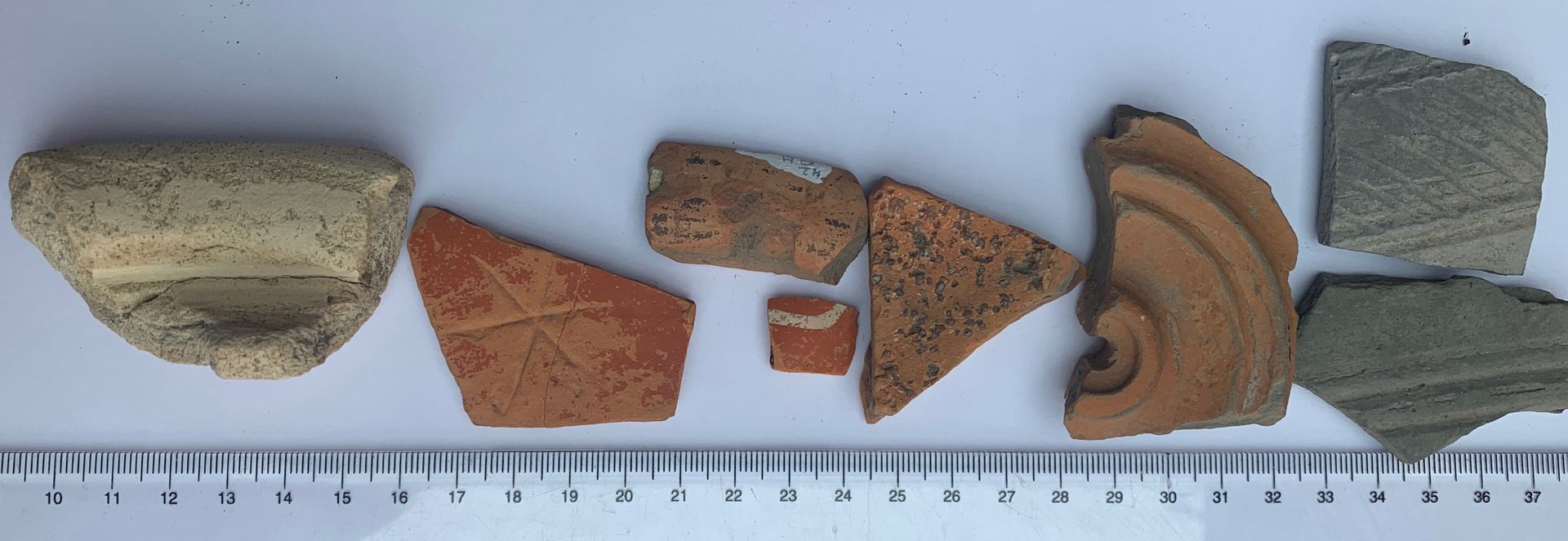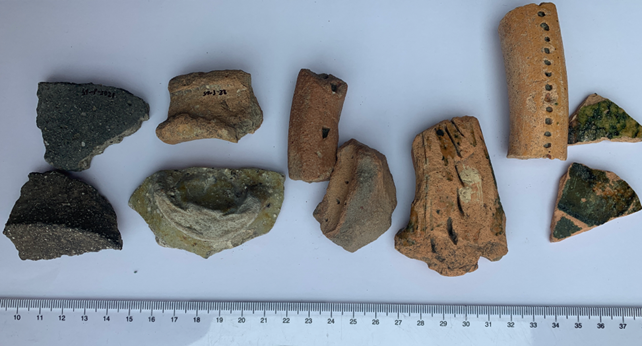41. Archaeological Pottery
It is increasingly apparent that the parish of Steventon has had a rich and long history of human settlement. Some of the best evidence for this occupation is derived from the diversity of ancient pottery types that have been found across the parish.
As with communities today, ceramics played important role in many aspects of ancient life and over time, pottery has been designed and produced according to:
• different ethnic traditions
• different raw materials (based on what is locally available or can be traded) and
• different levels of technological mastery.
As a consequence of these factors, pottery made during different periods of time tends to have a consistent range of appearances and/or form. However, as any householder knows, the ability to preserve a whole ceramic vessel over many 100s of years is limited and as a consequence, archaeological pottery is normally found as isolated fragments that are referred to as sherds. Detailed work by archaeologists has allowed the age-range of different pottery types to be verified. During an archaeological excavation, sherds of pottery can be found in their correct context but in most cases, sherds are found out of context (for example in a present day field) where they have been aggregated through agricultural activities. This limits the level of scientific understanding we can get from this material but through the characterisation of the different types of pottery sherd found we can gain some insight into the existence or not of ancient populations in different geographical regions.
Ancient pottery fabrics are characterised by the colour, nature, sorting and composition of the clayey matrix and the trituration grits that have been added to it; the nature of any glaze or slip that ornaments the ceramic and how well it has been fired. The method of shaping can also be useful when characterising pottery types (i.e. differentiating wheel-thrown versus handmade forms). In the examples provided here a number of the different types of ancient pottery fabrics will be provided.
Iron Age

Coarse fabric of varying colours with a range of composition of grits (from shelly to quartz-prone). A range of different vessel types are recognised to from jars to bowls. Note, on the sample second from the right, the rim of this sherd has been decorated by pressing a thumb into the wet clay to give it a crenelated effect.
Roman

Pottery production flourished during Roman times with a great diversity of pottery types being recognised. All of the samples above were likely to have been produced in the Oxfordshire region. The sherds include those with a sophisticated style of decoration either by painting or through inscription. Third from the right is part of a typically Roman morteria (a bowl used to process and grind food types). Next to this is a cheese press. Compared to the pottery produced before or after this period, it is clear that the Roman had a traditions that demonstrated higher level of technological mastery.

Early Medieval (Anglo-Saxon) and Medieval
In the image above the relative age of these samples decreases from left to right. The left most fabrics are Anglo-Saxon in age. The remainder are Medieval and as the fabrics young so the tradition for developing smoother less-sand-prone fabrics is revealed. Common vessel types were bowls and jugs. Note the distinctive ornamentation of the jug handles. Note also the use of glaze.
Post-Medieval

A small number of examples of glazed post-medieval fabrics. A range of different vessels types are evident from large bowls to smaller cups and beakers. These types of fabric are common.
Clay Pipes

Normally, only the stems of these pipes are preserved as the bowls tend to break and are more fragile.